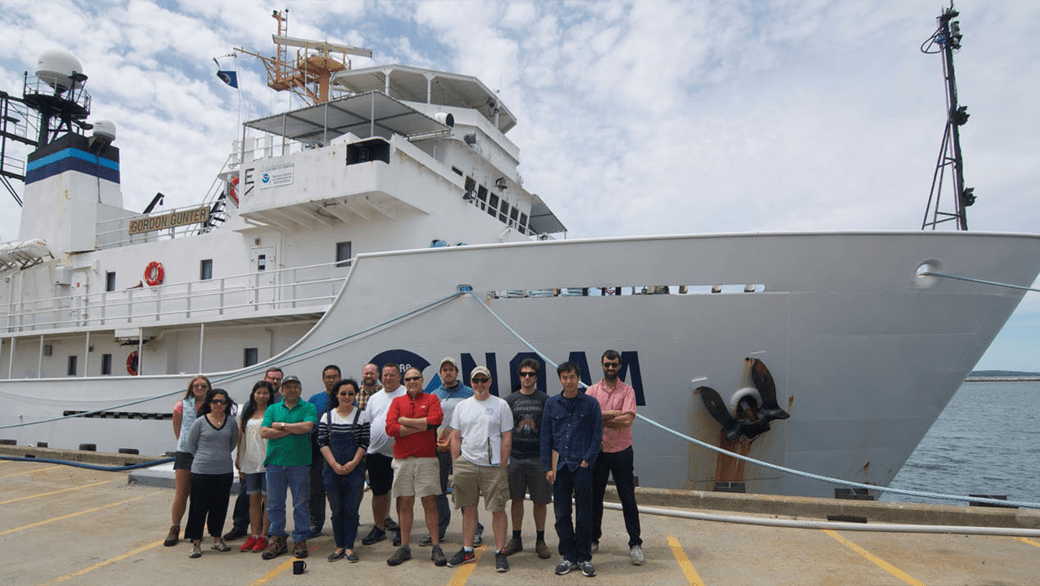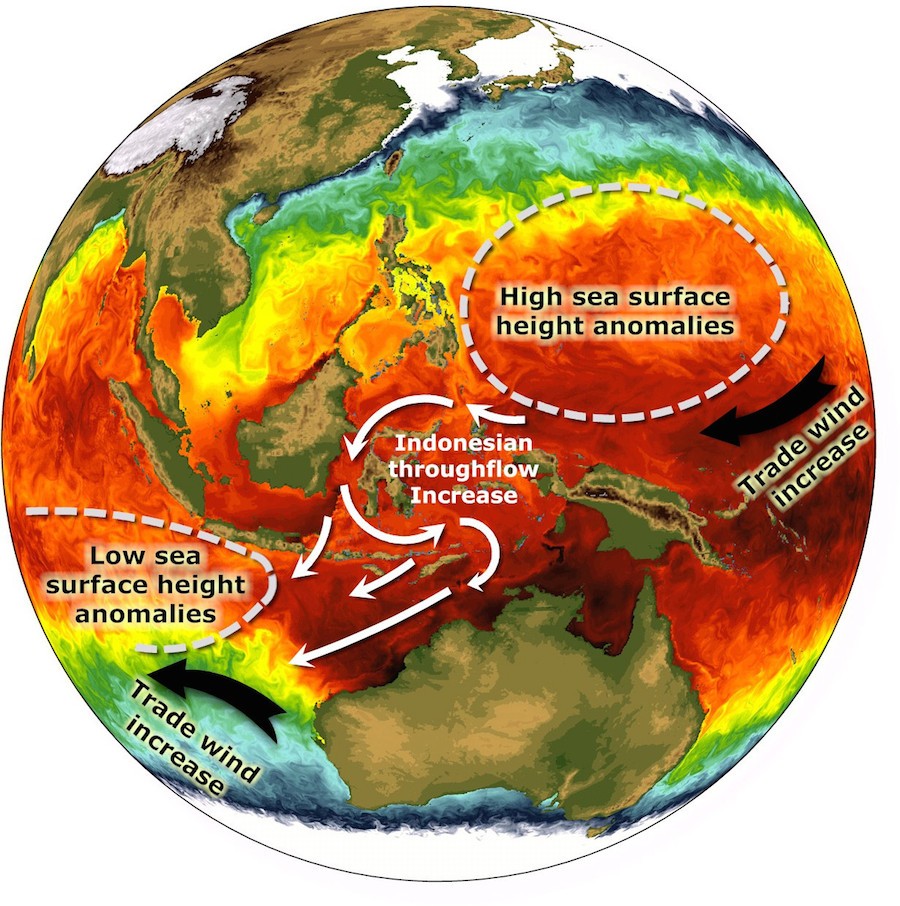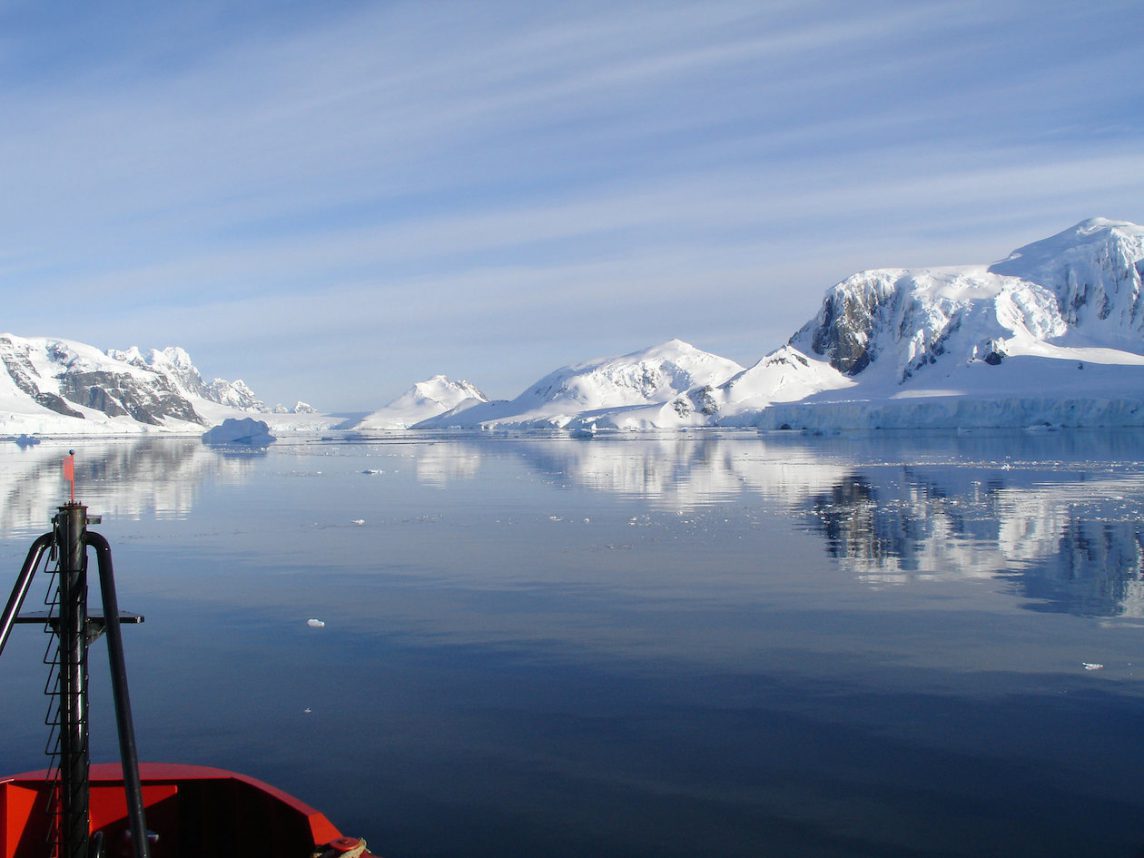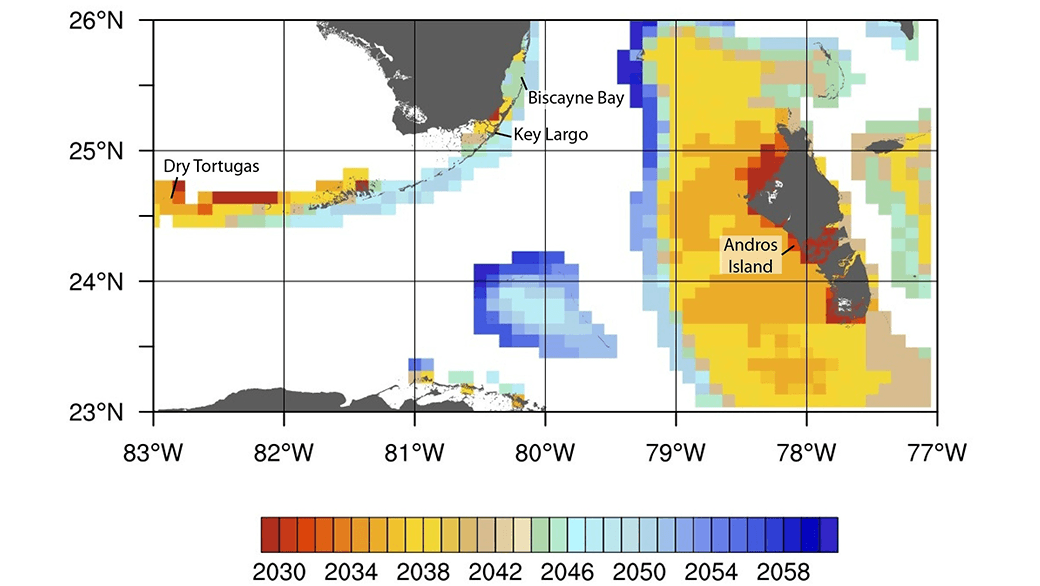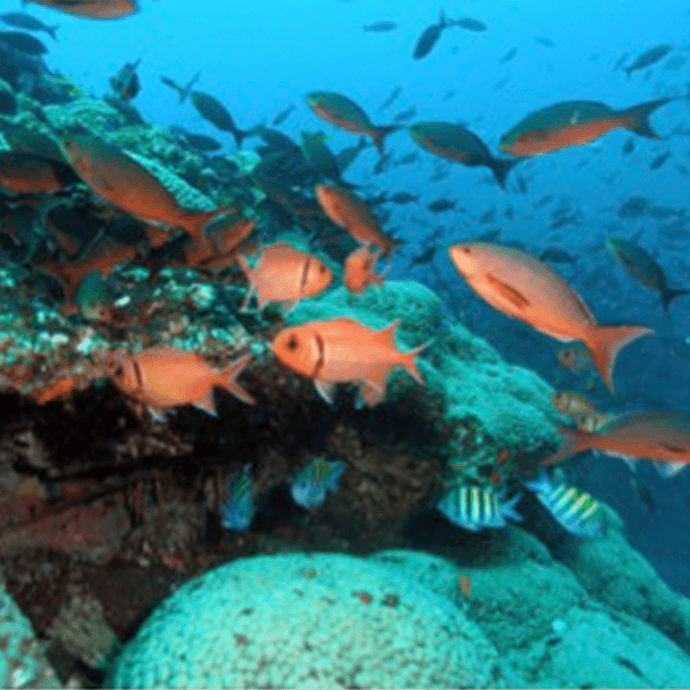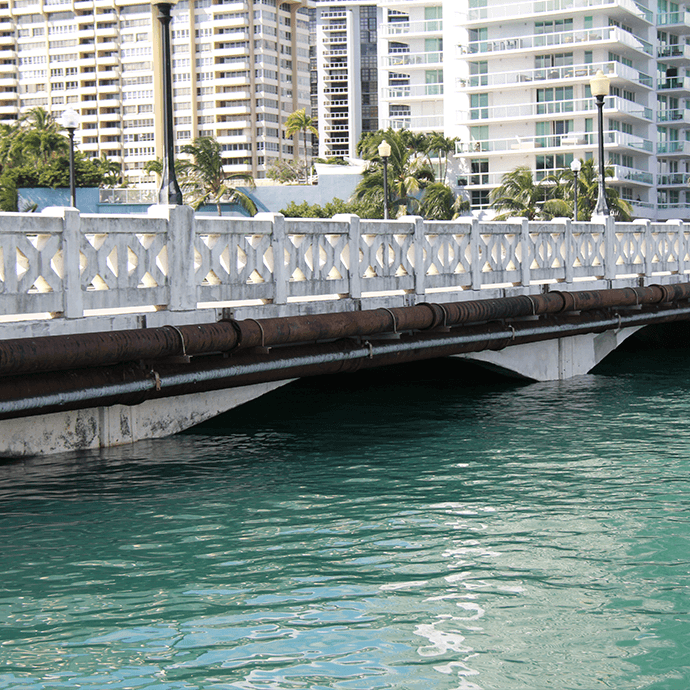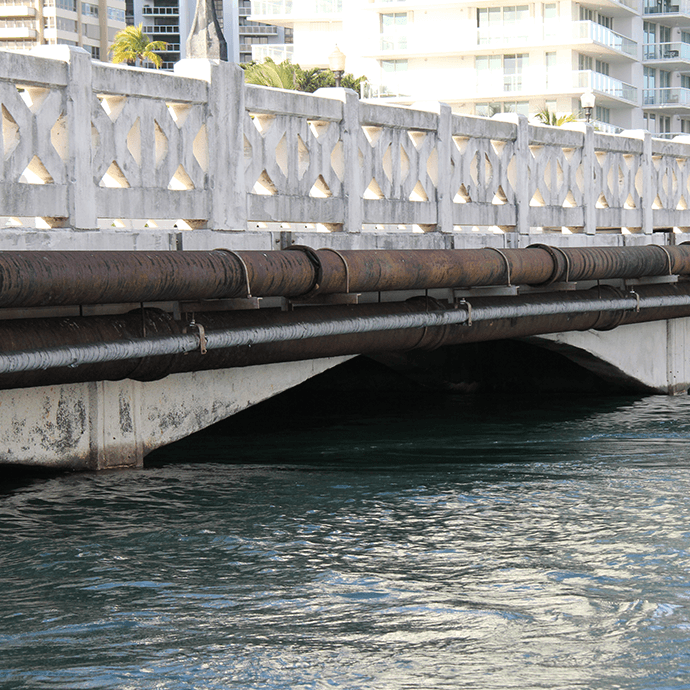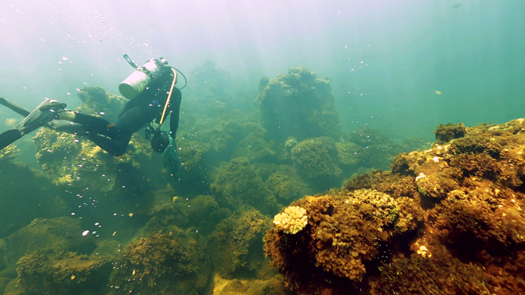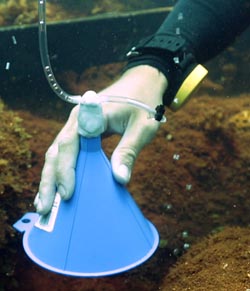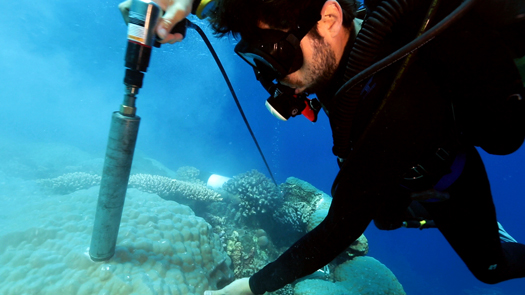A team of researchers, including scientists from AOML and the University of Miami, set sail June 19th on a research cruise aboard the NOAA ship Gordon Gunter to provide increased understanding of ocean acidification and its drivers along the U.S. East coast. The cruise, which is part of a larger effort supported by NOAA’s Ocean Acidification Program, investigated near-shore and deep waters, and provided researchers with more detailed information about changing ocean chemistry in different environments.
Ocean acidification is a fundamental change in ocean chemistry involving a progressive decline in pH over decades caused primarily by the absorption of increasing carbon dioxide emissions. Additionally, freshwater and nutrient run off from the coasts can alter seawater chemistry. The rise in dissolved CO2 and concurrent drop in pH (lower pH indicates higher acidity), changes ocean chemistry in a way that robs marine organisms, such as mollusks and corals, of the carbonate ions they need to build shells and skeletons. At the same time, the increasing acidity can erode the structures they’ve already built, and appears capable of disrupting their bodies in other ways that make it hard for them to thrive.
The Gunter traveled north from Newport, RI to survey the waters of the Nova Scotia Shelf and then steamed south, surveying waters close to shore to provide detailed information about water chemistry within the Gulf of Maine, Long Island Sound, the Mid-Atlantic and Southern Bight regions. The ship also investigated central Florida waters before reaching Miami on July 24. Similar Ocean Acidification Program cruises have taken place on the U.S. West Coast and the Gulf of Mexico. Understanding why and how fast ocean chemistry is changing along our coasts will allow scientists to better predict future changes, explore ways to adapt to those shifts, and provide insight into where marine organisms may be at greatest risk along U.S. coasts.
AOML researchers measured inorganic carbon dioxide, partial pressure of carbon dioxide, and collect nutrient samples to be analyzed later at AOML. By collecting and analyzing samples in near-shore and deeper waters, scientists will better understand what drives the process of ocean acidification in different regions of the East Coast. The East Coast has a broad shallow shelf, which could be a significant source of potentially corrosive, freshwater discharge from rivers into the coastal ocean. Sampling along the coast will allow scientists to understand how fresher waters, coastal influences, and phytoplankton may alter our ocean chemistry. This environmental information about ocean acidification is essential to predicting its effects on important marine resources, so that communities can mitigate and adapt to these changes.
